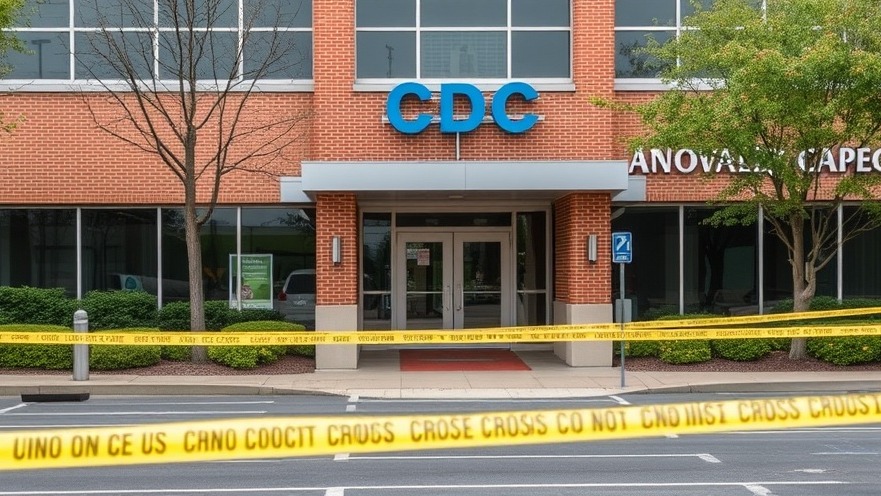
The Tragic Shooting at CDC: A Wake-Up Call for Public Safety
The recent tragedy outside the U.S. Centers for Disease Control and Prevention (CDC) headquarters in Atlanta has sent shockwaves through the nation. On August 8, a gunman opened fire, leaving one police officer dead and damaging multiple buildings within the agency, which is known for leading public health efforts globally. This attack has not only raised alarms about security at vital institutions but also highlighted the impact of gun violence on community safety.
A Community Shaken
The CDC complex, along with its neighboring environments, normally portrays a serene atmosphere in northeast Atlanta. However, the sudden chaos transformed this picture into a locked-down crime scene. Witness accounts from nearby businesses, such as The General Muir restaurant, shared harrowing experiences of the day, with patrons ducking for cover amid the gunfire. The rapid response from law enforcement underscored the seriousness of the situation and the immediacy with which communities must act to address such threats.
Understanding the Impact of Violence on Public Health Institutions
This incident raises significant questions about the safety of public health workers who operate under high-stress conditions amidst ongoing health crises like the pandemic. CDC Director Susan Monarez noted the extensive damage to the facility where thousands contribute to vital disease research. The emotional toll on employees, who have witnessed the violence unfold, can result in longer-term psychological impacts that affect performance and morale in these critical roles.
Lessons for Future Safety Protocols
In response to the incident, Monarez announced a remote workday for CDC employees to allow for a thorough security assessment. This proactive measure mirrors how organizations across the country are reevaluating their safety protocols. As attacks on public institutions become more frequent, the necessity for increased security measures and community preparedness stands paramount. Law enforcement agencies nationwide must also consider strategies to protect not only their personnel but also the citizens they serve.
The Broader Context of Gun Violence
This shooting at the CDC is just one example in the continuum of gun violence that plagues the United States. Recent statistics show that gun-related incidents have increased significantly, adding strain to local law enforcement and health services alike. Georgia Governor Brian Kemp referenced another violent incident in Fort Stewart, emphasizing the need for unified action against such tragedies. As communities grieve, policymakers grapple with the challenge of striking a balance between rights and safety.
Immediate and Long-Term Responses
In the aftermath of this attack, swift results are expected from investigations probing the gunman's motives. Community leaders and lawmakers face mounting pressure to provide clearer pathways for preventing future incidents. The emotional narratives surrounding individuals affected, such as Officer David Rose, remind us of the personal costs of such violence, driving home the urgency for solutions.
Empowering the Community
As citizens, being informed and engaged in community safety protocols is vital. Understanding the dynamics of public health institutions like the CDC and how violence can disrupt their operations not only elevates awareness but also fosters solidarity within the community. Local organizations and advocacy groups play a crucial role in driving conversations about safety policy and community health, allowing for a collaborative approach to reducing violence.
Conclusion: A Call to Action
The Atlanta CDC shooting has emerged as a crucial call to action for public health agencies and communities across the nation. The mix of grieving, reflection, and a push for clearer safety strategies must not only be encouraged but acted upon to ensure that such tragedies do not reoccur. Every voice matters in championing public safety and health—let's ensure that we step forward united in this cause.
 Add Element
Add Element  Add Row
Add Row 



Write A Comment